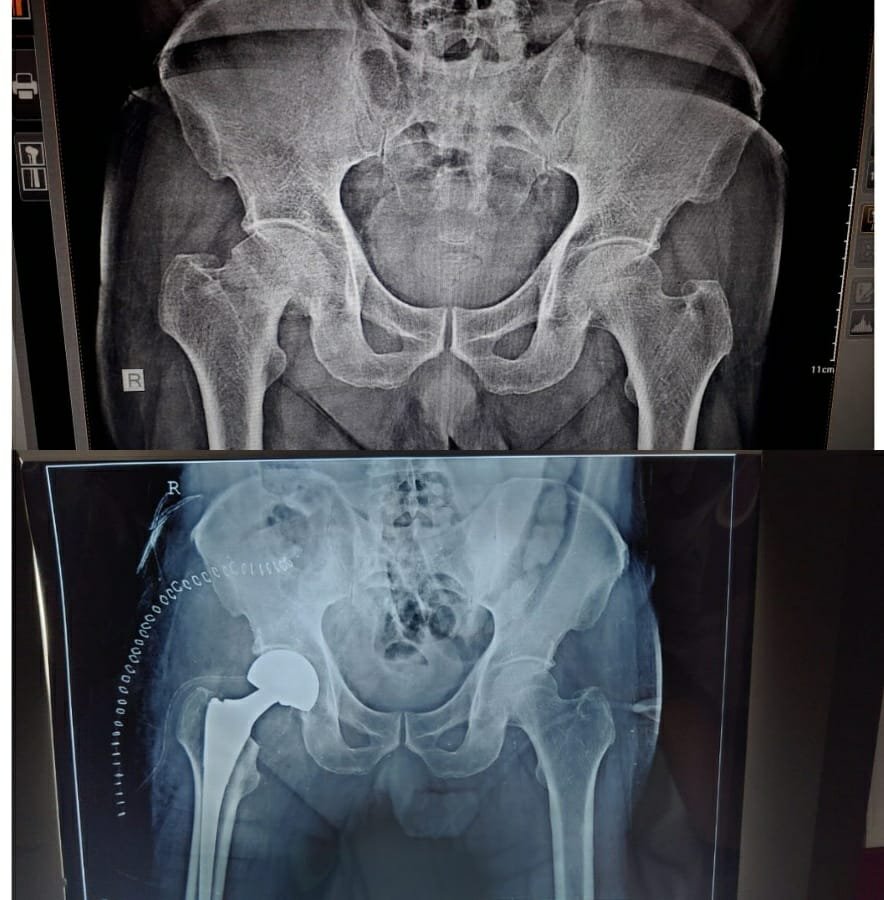The patient is a 28-year-old health-conscious bank employee who enjoys playing football during weekends. During one such weekend, he was unfortunately tackled in an aggressive manner which landed a kick directly to his left knee.
The patient recalls falling down with intense pain in his knee joint; his knee started swelling very soon after the injury. In the following days, the pain only worsened, and he was unable to put any weight on the injured leg. He was then referred to our Wholistic Care Centre for consultation with Dr. Saurabh Talekar.
Proximal tibia fractures are common, and Schatzkar’s type 5 fractures are challenging to fix. Hence performing a CT scan is a standard protocol for planning the surgery, and MRI scans are typically not performed. However, we performed the MRI scan due to high clinical suspicion, and a medial meniscal tear was found, which was treated in the same sitting through Arthroscopy. The ORIF and meniscal repair was hence done in the same setting.
Before the surgery, the highly-skilled Dr. Saurabh Talekar discussed the risks, benefits, and potential complications with the patient and his family. The patient was given spinal anaesthesia during the surgery which avoids complications of General Anaesthesia and at the same time provides Adequate anaesthesia. During the operation, Dr. Saurabh Talekar and his team carefully monitored the patient’s vital signs, like his blood pressure and heart rate.
Dr. Talekar first cleaned the injured area and made an incision through the skin and muscle. Then he brought the pieces of the patients’ tibia back into alignment. Next, he secured the pieces of the tibia to each other (known as fixation). Fixation is a process where the surgeon uses tools like nails, screws, metal plates, wires, or pins. The Meniscus was repaired through a minimally invasive approach without entering the joint. The procedure was performed by visualisation through an arthroscope into the joint.


